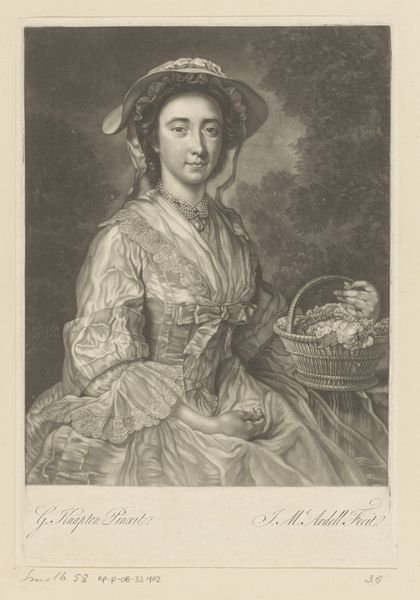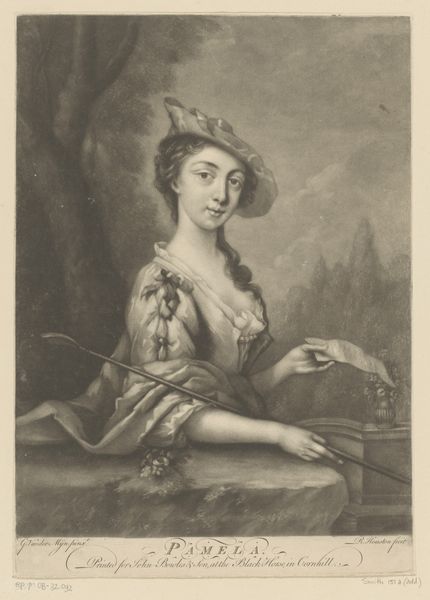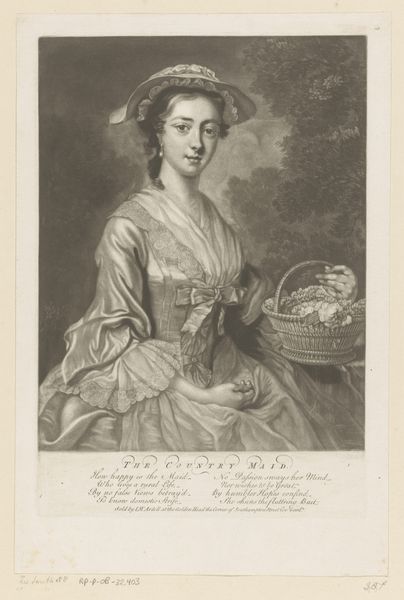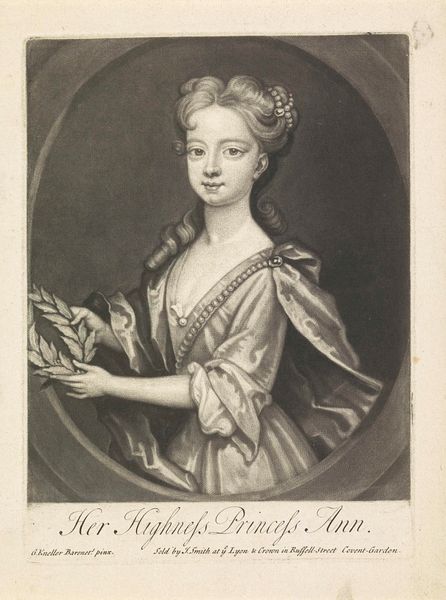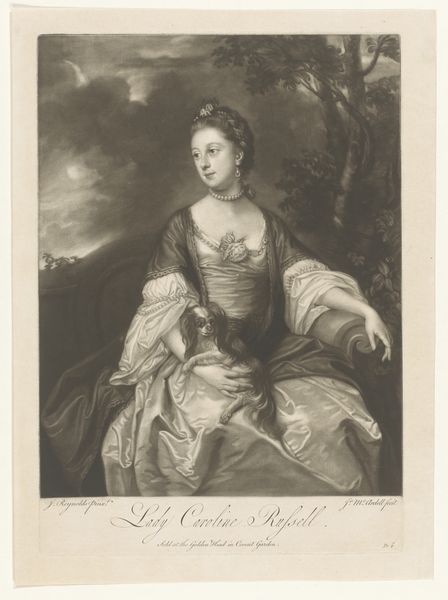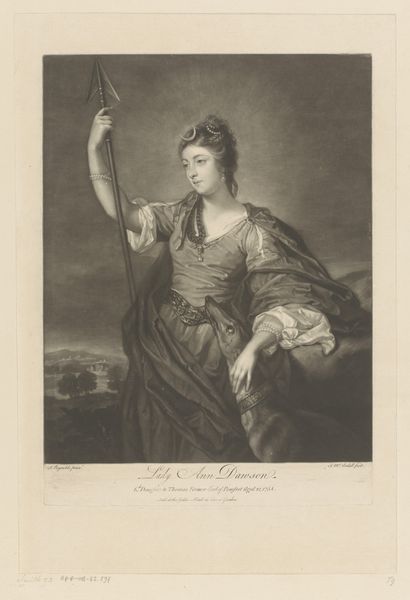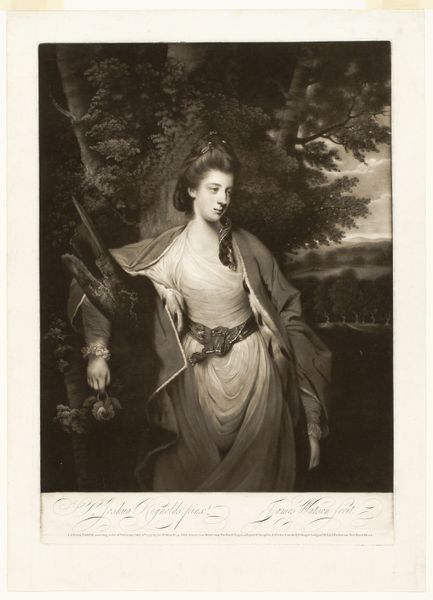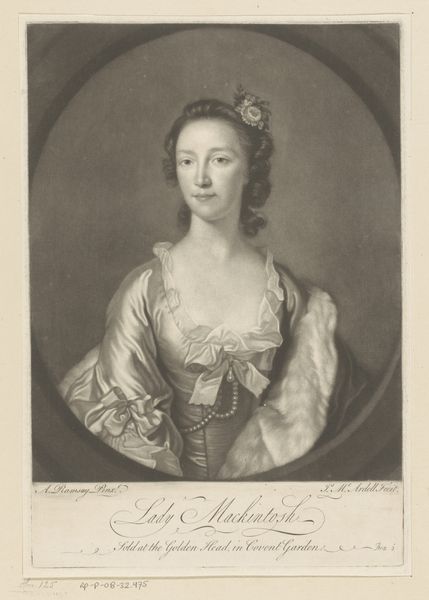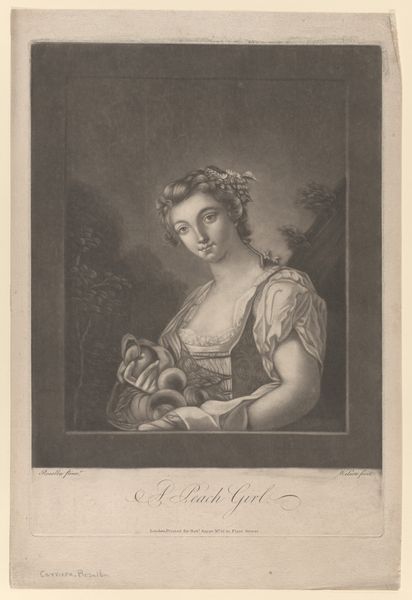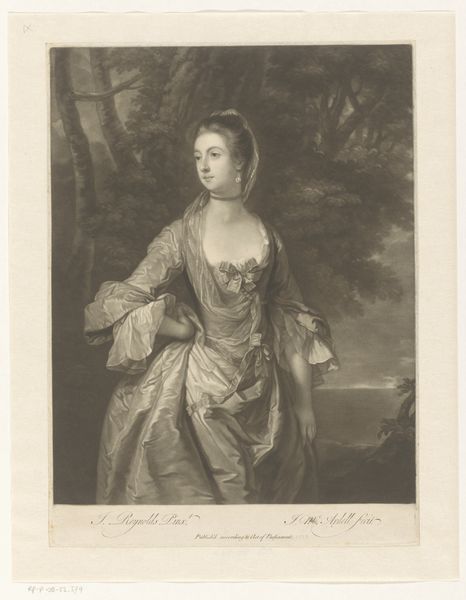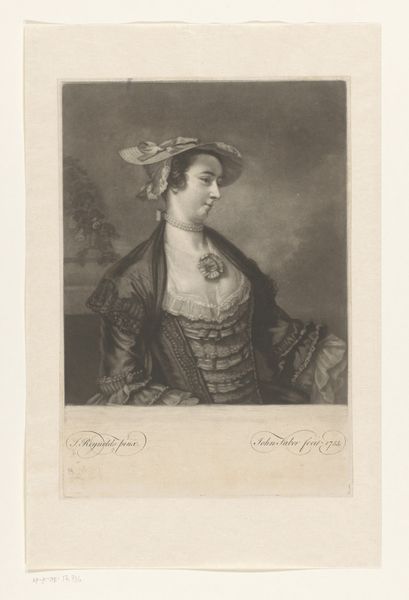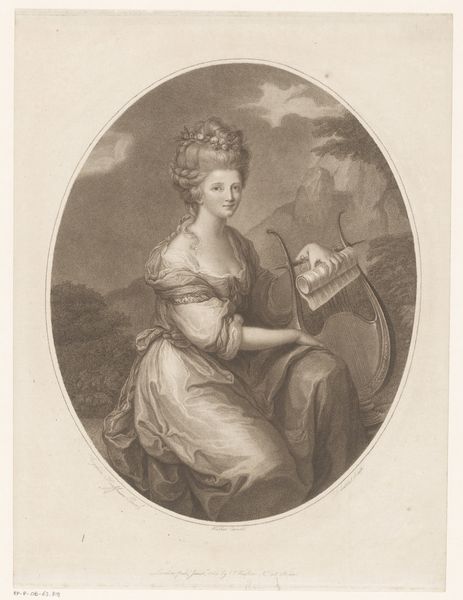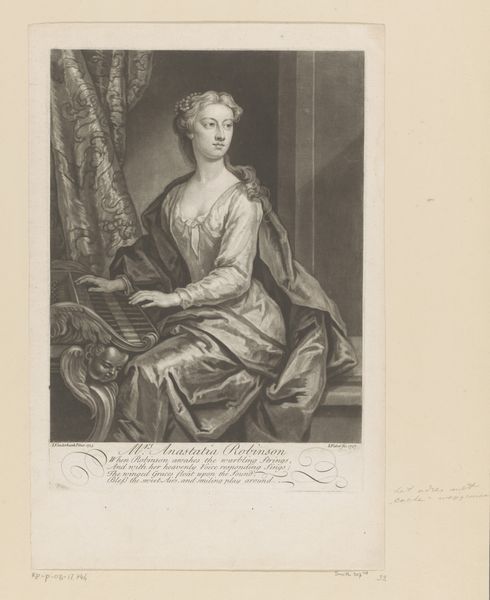
engraving
#
portrait
#
baroque
#
old engraving style
#
pencil drawing
#
line
#
history-painting
#
engraving
Dimensions: height 351 mm, width 251 mm
Copyright: Rijks Museum: Open Domain
Curator: Here we have a captivating engraving by James McArdell, titled "Portret van een vrouw met schuine hoed en pareloorbel"—"Portrait of a Woman with Slanted Hat and Pearl Earring." It was created sometime between 1750 and 1765. Editor: There's a delicacy to this. The rendering of fabrics seems so meticulous. I imagine this engraving being printed in multiple states to get it just right, given how subtly the textures shift across her dress. Curator: Precisely. McArdell was a master of mezzotint, a printmaking technique allowing for rich tonal variations, simulating the look of an oil painting. It served a vital role in disseminating imagery of notable figures and artworks to a broader public. Editor: The level of detail definitely makes me think about the labor involved. You have to admire the hand skill in creating such refined details across this Baroque image—all that lacework on her sleeves, replicated over and over! Also, is that an actual pearl? Curator: A symbolic marker of status, without a doubt. Fashion of this era became heavily politicized. Adorning oneself in a certain way announced one’s alignment with specific aristocratic or even national identities. It was an outward projection of one’s socio-political belonging. Editor: Speaking of symbols of status, her large hat! The feathers look so meticulously rendered. It gives a very distinct impression of wealth, doesn't it? Almost conspicuous in its presentation. It feels so performative and yet, crafted with impressive precision. Curator: Agreed. It also prompts the question, to what extent does this portrait reflect an individual versus embodying an ideal of womanhood dictated by courtly culture? McArdell doesn’t necessarily seek pure naturalism, instead he captures what his patrons want posterity to think of them. Editor: Fascinating! Seeing all this detail makes you consider the consumption patterns of the time, not merely its cultural norms and politics, as each print in circulation created access for people to possess what once had been reserved for very few, even if in simulated form. Curator: Indeed, this print complicates any straightforward understanding of access, production, and consumption of portraiture in the mid-18th century. Editor: Absolutely. It's so rewarding to delve deeper and acknowledge all the intricate and historically complex details!
Comments
No comments
Be the first to comment and join the conversation on the ultimate creative platform.
